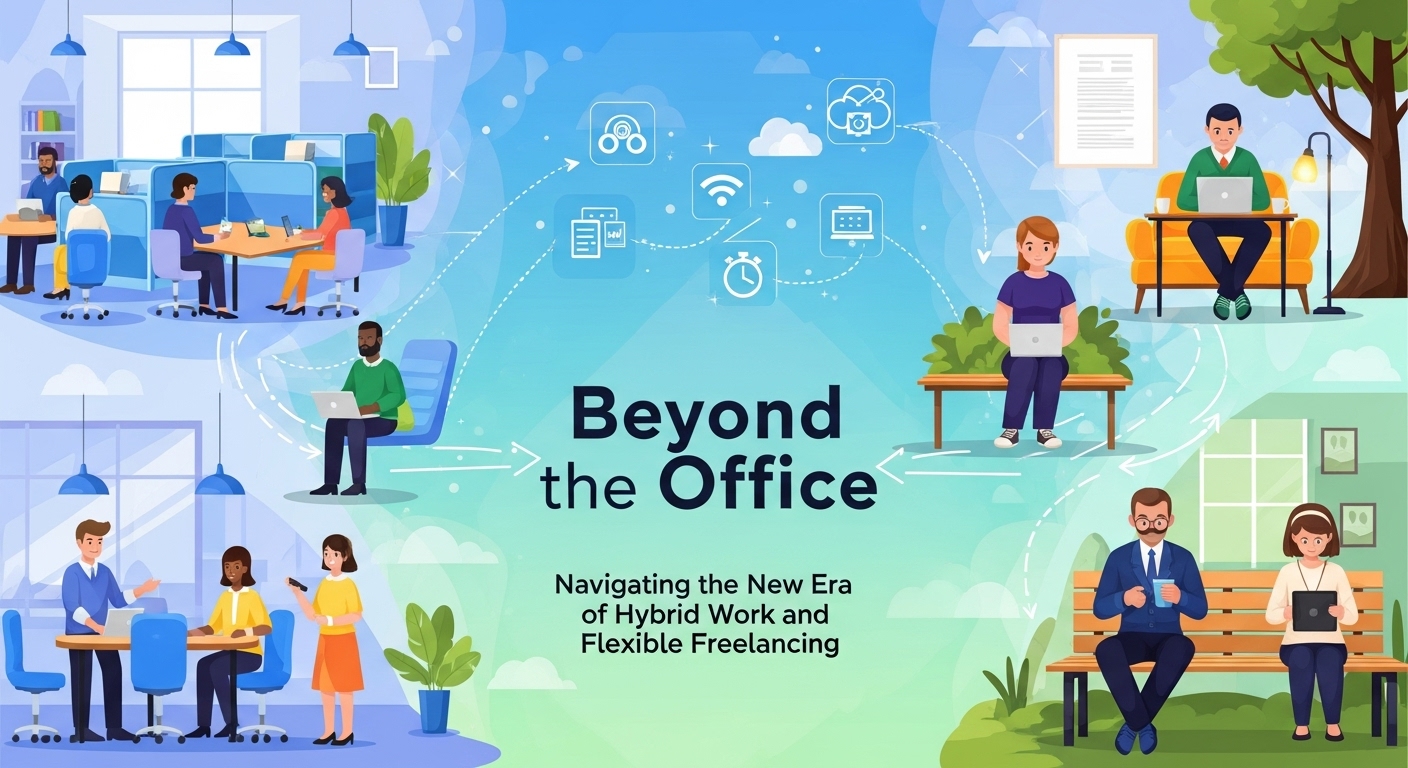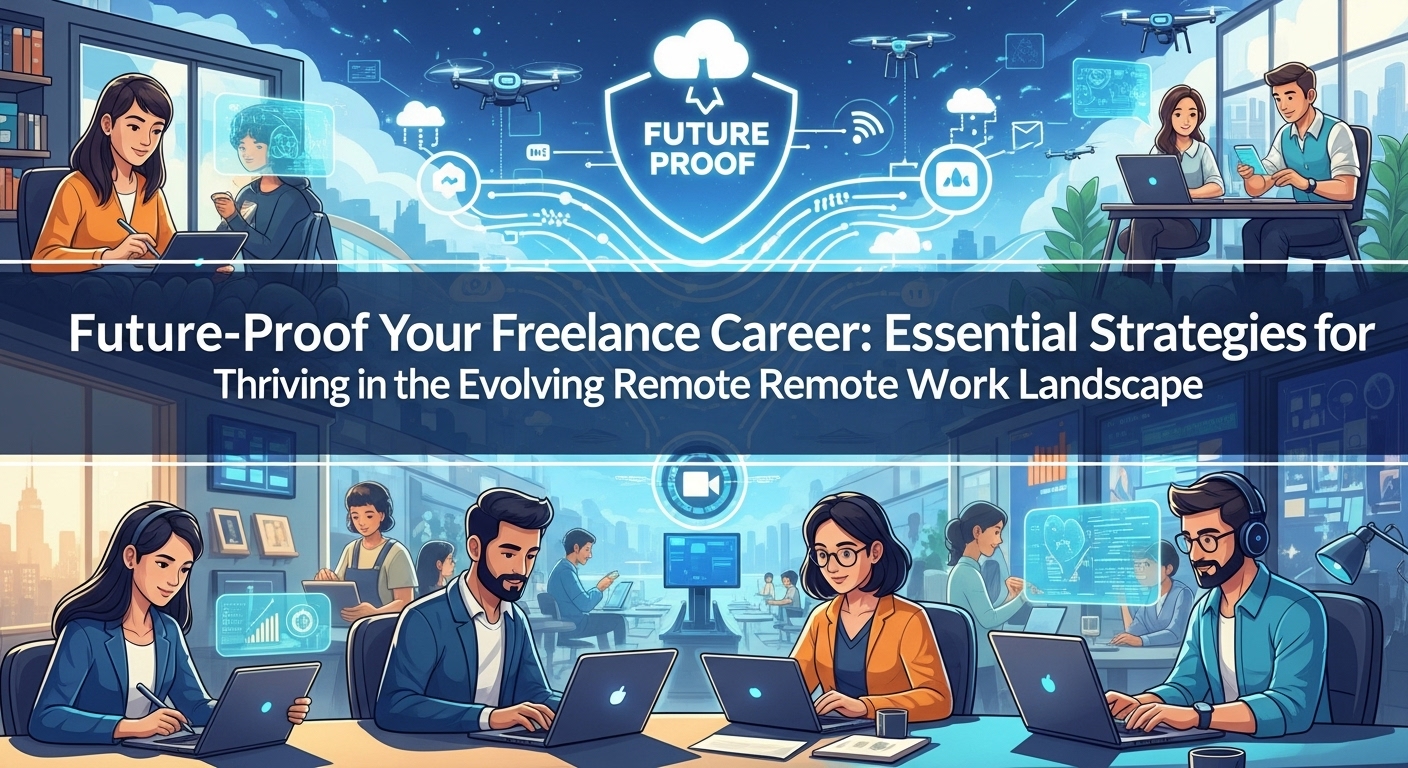The Workplace Revolution Is Here to Stay
Remember the days when the 9-to-5 office grind was the undisputed king of the professional world? The morning commute, the shared coffee pot, the impromptu desk-side chats—it was the bedrock of corporate culture. Then, almost overnight, the world shifted. The global pandemic acted as an unprecedented catalyst, forcing businesses and employees to reconsider everything they knew about work. What emerged from this crucible wasn’t a temporary fix, but a fundamental evolution: the era of hybrid work and empowered, flexible freelancing.
This isn’t just about working from your kitchen table a few days a week. It’s a seismic shift in mindset, a re-evaluation of what productivity, collaboration, and career progression truly mean. We’ve moved beyond the binary choice of ‘office’ or ‘remote’. The new landscape is a nuanced spectrum of possibilities, offering unprecedented flexibility but also presenting unique challenges. Whether you’re an employee navigating a new hybrid schedule or a freelancer capitalizing on a borderless talent market, understanding this new terrain is crucial for success. This guide will help you navigate the opportunities and obstacles of this exciting new chapter in the world of work.
Understanding the Hybrid Work Model: More Than Just a Buzzword
So, what exactly is ‘hybrid work’? At its core, it’s a flexible work model that combines in-office work with remote work. However, there’s no one-size-fits-all approach. Companies are experimenting with various structures to find what best suits their culture, industry, and employee needs.
The Spectrum of Hybrid Models
Understanding the different flavors of hybrid work is the first step to mastering it. Here are some of the most common models:
- The At-Will Model: This offers the most flexibility. Employees can choose when they come into the office and when they work from home, based on their tasks and personal preferences. It prioritizes autonomy and trust.
- The Split-Week Model: This is a more structured approach where the company designates specific days for in-office work (e.g., Tuesday-Thursday) and remote work (e.g., Monday and Friday). This model aims to balance focused individual work with dedicated time for in-person collaboration.
- The Remote-First (or Office-Occasional) Model: In this setup, remote work is the default. The physical office serves as a hub for occasional collaboration, team-building events, or specific project kick-offs, rather than a daily requirement.
- The Office-First, Remote-Allowed Model: This is a more traditional approach where employees are expected to be in the office most of the time but have the flexibility to work remotely on occasion.
The success of any model hinges on intentionality. Companies can’t simply declare themselves ‘hybrid’ and expect it to work. It requires new policies, communication protocols, and a deep-seated culture of trust and inclusivity that values output over physical presence.
The Symbiotic Rise of Flexible Freelancing
The hybrid revolution isn’t just reshaping traditional employment; it’s pouring jet fuel on the world of freelancing & remote work. As companies become more comfortable with a distributed workforce, their reliance on specialized, on-demand talent has skyrocketed. This creates a powerful symbiotic relationship.
Why Companies are Embracing Freelancers in a Hybrid World
For businesses, integrating freelancers into their hybrid teams offers immense strategic advantages. They can tap into a global talent pool, bringing in expert skills for specific projects without the overhead of a full-time hire. A freelance web developer in another country can collaborate seamlessly with an in-house marketing team that’s only in the office three days a week. This agility allows companies to scale up or down quickly, responding to market demands with incredible speed. It’s no longer about finding the best person in a 30-mile radius; it’s about finding the best person, period.
How Freelancers are Thriving in the New Era
For freelancers, this shift is a golden opportunity. The stigma once associated with not being a ‘permanent’ part of a team is fading fast. They are now seen as valuable, integrated partners. The normalization of remote collaboration tools means freelancers can work with clients anywhere in the world, breaking down geographical barriers to income and opportunity. This new era empowers freelancers to design a work life that truly fits their lifestyle, whether that means working from a home office, a co-working space, or a beach in Bali. The focus has shifted from ‘where’ you work to the quality of ‘what’ you deliver.
Navigating the Challenges: It’s Not All Sunshine and Laptops
While the benefits are significant, this new work paradigm is not without its hurdles. Successfully navigating it requires awareness and proactive strategies from both individuals and organizations.
Combating Proximity Bias
One of the biggest risks in a hybrid model is ‘proximity bias’—the unconscious tendency for managers to favor employees they see in person. This can lead to remote or more flexible workers being overlooked for promotions, key projects, and mentorship opportunities. To counter this, companies must establish clear, metric-based performance reviews and train managers to lead inclusively, focusing on results, not face time.
Maintaining a Cohesive Culture
How do you build a strong company culture when half your team is physically absent? This is a critical challenge. The solution lies in being intentional about connection. This means scheduling virtual social events, creating digital ‘watercooler’ channels on platforms like Slack, and ensuring that all meetings—even those with just one remote participant—are run with a remote-first mindset (e.g., everyone on their own camera).
Mastering Asynchronous Communication
When team members are spread across different locations and even time zones, you can’t rely on instant responses. Mastering asynchronous communication is key. This involves using project management tools like Asana or Trello to track progress, writing clear and detailed messages to avoid back-and-forth, and respecting that colleagues will respond when their schedule allows. It’s a shift from a culture of immediacy to a culture of clarity and trust.
For Freelancers: The Double-Edged Sword of Freedom
Freelancers face their own set of challenges. The very autonomy that makes freelancing attractive can also lead to isolation and burnout. Without the structure of an office, the lines between work and life can blur. Successful freelancers are masters of self-discipline. They create their own routines, set firm boundaries with clients, schedule regular breaks, and actively cultivate a professional network to combat loneliness and stay connected to their industry.
Essential Tools for the Modern Work Ecosystem
Technology is the glue that holds the hybrid and freelance world together. Having the right digital toolkit is non-negotiable.
- Communication Hubs: Platforms like Slack and Microsoft Teams are the new virtual offices. They facilitate real-time chat, file sharing, and video calls, keeping everyone connected.
- Video Conferencing: Zoom, Google Meet, and Webex have become staples for everything from team stand-ups to client presentations.
- Project Management: Tools like Trello, Asana, Monday.com, and Jira are essential for tracking tasks, deadlines, and project progress in a transparent way.
- Collaborative Documents: Google Workspace and Microsoft 365 allow teams to co-edit documents, spreadsheets, and presentations in real time, eliminating version control nightmares.
- Digital Whiteboards: Miro and Mural provide infinite canvases for brainstorming sessions and workshops, ensuring remote participants can contribute just as effectively as those in the room.
Embrace Your Future in the New World of Work
The shift to hybrid work and flexible freelancing is more than a trend; it’s a permanent evolution in our relationship with our careers. The rigid structures of the past are dissolving, replaced by a more fluid, personalized, and output-driven approach. This new era offers incredible potential for a better work-life balance, greater autonomy, and access to global opportunities.
However, realizing this potential requires a proactive mindset. For employees, it means developing strong communication skills, being disciplined while working remotely, and making your contributions visible regardless of your location. For freelancers, it means mastering self-management, building a strong personal brand, and continuously adapting to new technologies. For companies, it means leading with trust, investing in the right tools, and intentionally building an inclusive culture that transcends physical walls.
The office is no longer the sole center of the professional universe. The future of work is a dynamic ecosystem, and it’s up to you to find your place in it. Are you ready to navigate what lies beyond the office?


